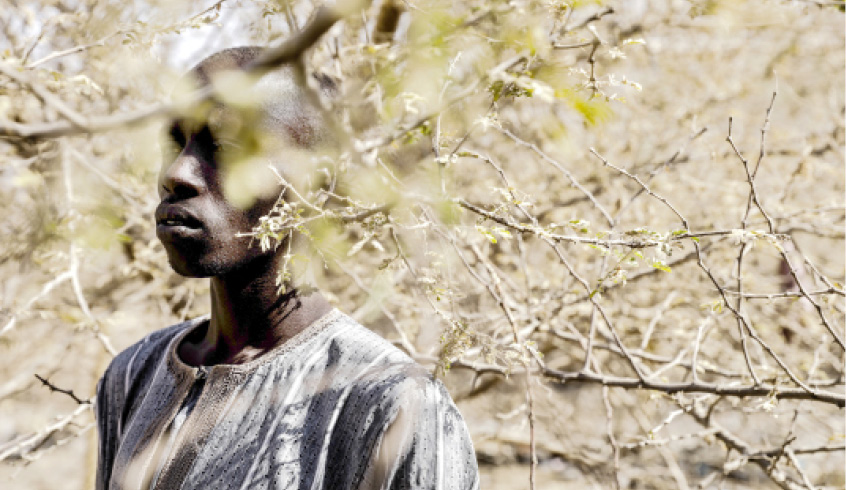Hashtags, media coverage and the Nigerian government’s handling of abductions
In the past decade, Nigerian governments has seen a growing and heightened torrent of terrorism

In the past decade, Nigerian governments has seen a growing and heightened torrent of terrorism. From the bombings, abductions and killings in Borno to the kidnappings in Kaduna, this has posed many challenges to a country with its already existing history of many battles; ethnic and religious tensions, farmer-herder conflicts, corruption, infrastructural problems etc. It is virtually impossible to open a newspaper or a social media application without a bombardment of bad news in the Nigerian landscape. Every day, every hour presents a new problem.
In Borno State in North Eastern Nigeria, however, this is intensified by the ongoing Boko Haram conflict which has dominated the Nigerian news for more than a decade. Tragically, almost every week, there is a sad story of attacks. And in 2014, it was the abduction of over 200 secondary schools’ girls in Government Girls Secondary school in Chibok. This caused an uproar and created a media frenzy. As state and federal government officials deployed all means to rescue the abducted girls, the media was considered vital to many for information, to track the hashtags and the rescue missions that followed for years. The media that has traditionally played the role of informing citizens and swaying public opinion became a double-edged sword; simultaneously working for governments, citizens but also sadly amplifying the profile and prominence of the abducted girls. A child protection issue, pitifully to the Nigerian government and media’s oblivion, crept in.
- Govt partners WHO to tackle second wave of COVID-19
- #EndSARS# : We need scholarship, children of slayed police officers beg gov’t
As the news reporting continued nationally and internationally, do did the search and a troubling denial by the then government. There no were visits to commiserate with families of the abducted girls. With an impending election, the Goodluck Jonathan regime increased rescue efforts exacerbated by the #BringBackOurGirls hashtag online. A plea by the education activist Malala and a Michelle Obama cosigning brought much needed attention to the plight of the girls. Many local and international organizations chimed in for additional support.
Finally, when some of the abducted girls were released after an alleged negotiation between an international organization and the terrorist group, the girls were ferried immediately to the government houses. A media coverage of the girls continued both within the confines of the state and federal buildings to their homes in Chibok, Borno State. When the girls met their parents, it was more images. A series of photos of the girls surfaced online and offline further fueling the media mania. Citizen journalism also became a culprit of viral videos of children. Most of this was indeed necessary to inform the public of the good news, but there was a detrimental effect of the hysteria. This was the beginning of the ethical muddle.
In the flurry of activity around the girls, there never seemed to be no discussion about child protection or the ethics of photographing or interviewing minors. The girls, some of whom were sent to boarding schools or private schools in Nigeria and abroad where kept in tight control of the federal government or organizations. Nonetheless, there was intense scrutiny on their lives; articles, books, documentaries and many conferences. As essential as these discussions were to understanding the trauma, the psychological impact of the lackluster government efforts, hashtags and media coverage remained in the backburner.
In a similar tragic fashion, on 11 December, 2020 more than 500 school boys were abducted in their boarding school of Government Science school in Kankara, Katsina State, North Western Nigeria. A hashtag #BringBackBackOurBoys emerged. A few days later, a joyous online celebration of commendable efforts by security personnel ensued after the release of the boys. Prayers for the safety of the country were visible in open discussions on different platforms. Yet, in the typical style of Nigerian response to abductions eerily similar to the Chibok girls, the young boys from Kankara were being paraded in front of an array of dignitaries immediately after being rescued. The photo of the disheveled boys still in uniform being taken from the place of abduction straight to the government house for a press conference appeared. Had they seen their parents? Had they showered or eaten or slept? What was the state of their mental health? Why were cameras in their faces without the consent of their parents? Why was child protection not a priority? It was obvious none of this was considered.
Why does the media, with prompts and facilitation from the government, constantly swoop in for storytelling for the sake of breaking news with ethics out the window? What we are seeing happening to the boys from Kankara is exactly what happened to the girls from Chibok; a media frenzy with minimal focus on their mental health. By endlessly parading them from room to room for interviews, the Nigerian government and media may be re-traumatizing them. Sharing the images of the boys online in their uniforms from the days of captivity made them a spectacle thereby exposing them again and again. What is the impact of being labeled ‘’an abducted boy’’ or ‘abducted girl’’ with photos plastered around the world? What are the repercussions of media attention on abducted or traumatized children? From the harrowing tales of Chibok girls, Kankara boys, Dapchi girls to the Buni Yadi boys, how do we report but protect children whilst maintaining journalistic ethics?
